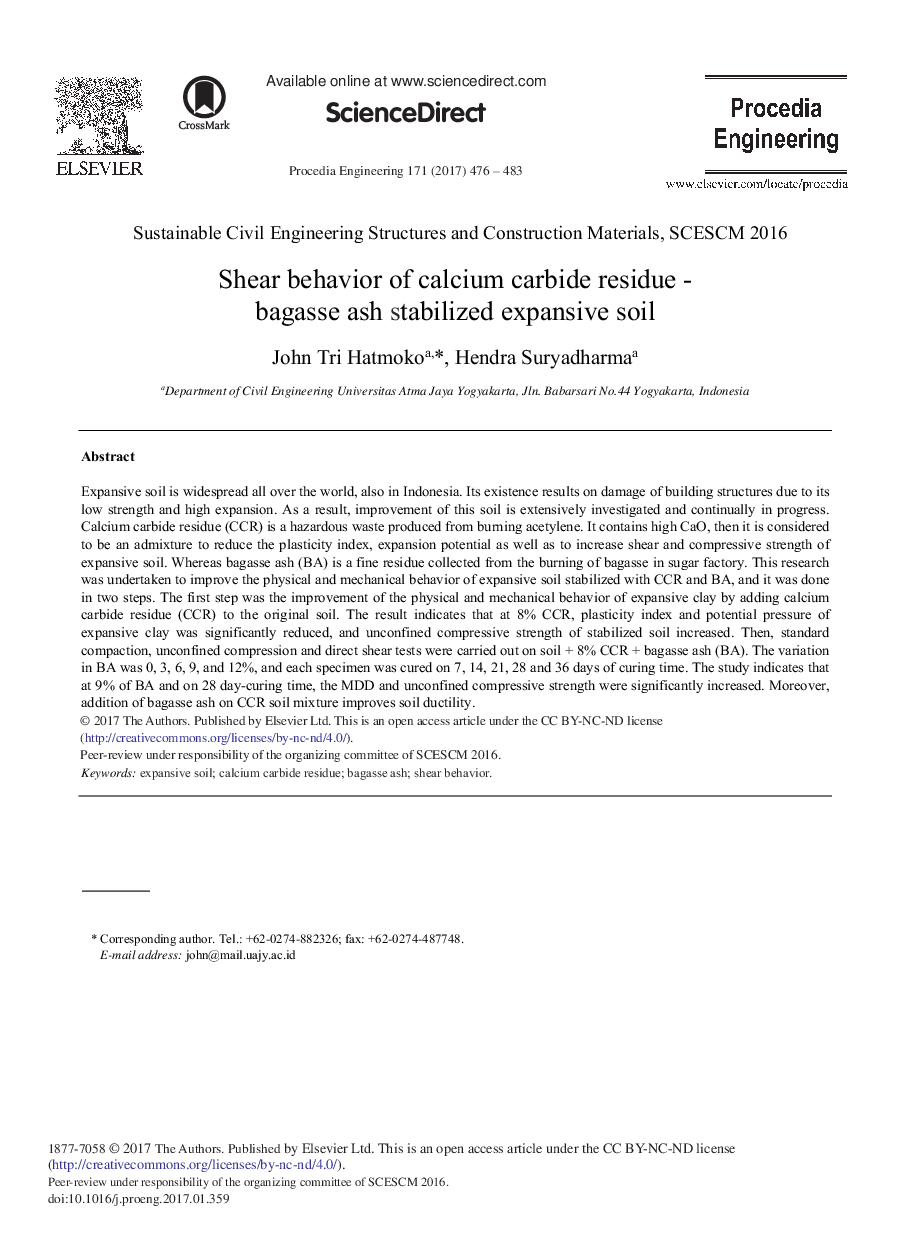| کد مقاله | کد نشریه | سال انتشار | مقاله انگلیسی | نسخه تمام متن |
|---|---|---|---|---|
| 5028583 | 1470655 | 2017 | 8 صفحه PDF | دانلود رایگان |

Expansive soil is widespread all over the world, also in Indonesia. Its existence results on damage of building structures due to its low strength and high expansion. As a result, improvement of this soil is extensively investigated and continually in progress. Calcium carbide residue (CCR) is a hazardous waste produced from burning acetylene. It contains high CaO, then it is considered to be an admixture to reduce the plasticity index, expansion potential as well as to increase shear and compressive strength of expansive soil. Whereas bagasse ash (BA) is a fine residue collected from the burning of bagasse in sugar factory. This research was undertaken to improve the physical and mechanical behavior of expansive soil stabilized with CCR and BA, and it was done in two steps. The first step was the improvement of the physical and mechanical behavior of expansive clay by adding calcium carbide residue (CCR) to the original soil. The result indicates that at 8% CCR, plasticity index and potential pressure of expansive clay was significantly reduced, and unconfined compressive strength of stabilized soil increased. Then, standard compaction, unconfined compression and direct shear tests were carried out on soil + 8% CCR + bagasse ash (BA). The variation in BA was 0, 3, 6, 9, and 12%, and each specimen was cured on 7, 14, 21, 28 and 36 days of curing time. The study indicates that at 9% of BA and on 28 day-curing time, the MDD and unconfined compressive strength were significantly increased. Moreover, addition of bagasse ash on CCR soil mixture improves soil ductility.
Journal: Procedia Engineering - Volume 171, 2017, Pages 476-483